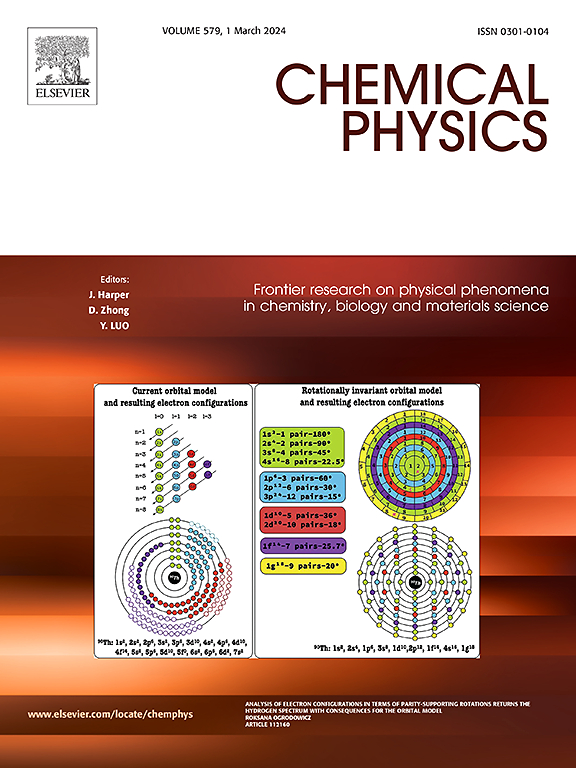First principle investigation of the structural, optoelectronic, mechanical and thermoelectric performance of Nb-Ti co-doped ZrO2
IF 2.4
3区 化学
Q4 CHEMISTRY, PHYSICAL
引用次数: 0
Abstract
This study investigates the structural, optoelectronic, mechanical, and thermoelectric properties of ZrO₂ co-doped with Nb and Ti using density functional theory (DFT) with the full-potential linearized augmented plane wave (FP-LAPW) method implemented in the Wien2k code. First-principles calculations confirmed the thermal and structural stability of the doped systems, revealing a narrowing of the electronic band gap induced by Nb-Ti co-doping. Optical analysis demonstrated strong light absorption across the visible and ultraviolet spectral regions, underscoring the material's potential for optoelectronic applications. Elastic constants and mechanical parameters validated the mechanical stability and ductile behavior of the doped ZrO₂. Furthermore, thermoelectric evaluation revealed enhanced electrical conductivity and power factor in the co-doped systems compared to pristine ZrO₂, suggesting their suitability for energy-efficient cooling devices and waste-heat recovery systems. The findings highlight the synergistic role of Nb-Ti co-doping in tailoring ZrO₂’s multifunctional properties, positioning it as a cost-effective candidate for next-generation energy conversion technologies.
Nb-Ti共掺杂ZrO2的结构、光电、机械和热电性能第一性原理研究
利用密度泛函理论(DFT)和Wien2k代码实现的全势线性化增广平面波(FP-LAPW)方法,研究了Nb和Ti共掺杂ZrO₂的结构、光电、机械和热电性能。第一性原理计算证实了掺杂体系的热稳定性和结构稳定性,揭示了Nb-Ti共掺杂导致的电子带隙缩小。光学分析表明,该材料在可见光和紫外光谱区域具有很强的光吸收能力,这突出了该材料在光电应用方面的潜力。弹性常数和力学参数验证了掺杂ZrO₂的力学稳定性和延展性。此外,热电评价显示,与原始ZrO₂相比,共掺杂体系的电导率和功率因数有所提高,表明它们适合用于节能冷却装置和废热回收系统。研究结果强调了Nb-Ti共掺杂在调整ZrO₂的多功能特性方面的协同作用,将其定位为下一代能量转换技术的经济高效候选材料。
本文章由计算机程序翻译,如有差异,请以英文原文为准。
求助全文
约1分钟内获得全文
求助全文
来源期刊

Chemical Physics
化学-物理:原子、分子和化学物理
CiteScore
4.60
自引率
4.30%
发文量
278
审稿时长
39 days
期刊介绍:
Chemical Physics publishes experimental and theoretical papers on all aspects of chemical physics. In this journal, experiments are related to theory, and in turn theoretical papers are related to present or future experiments. Subjects covered include: spectroscopy and molecular structure, interacting systems, relaxation phenomena, biological systems, materials, fundamental problems in molecular reactivity, molecular quantum theory and statistical mechanics. Computational chemistry studies of routine character are not appropriate for this journal.
 求助内容:
求助内容: 应助结果提醒方式:
应助结果提醒方式:


